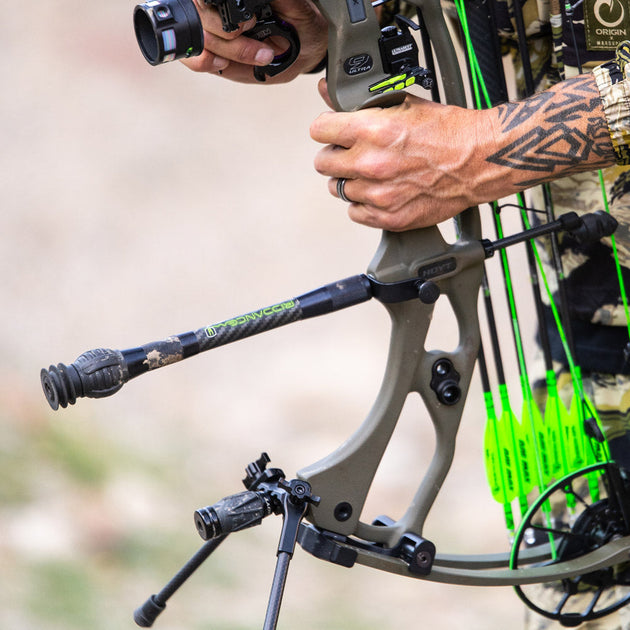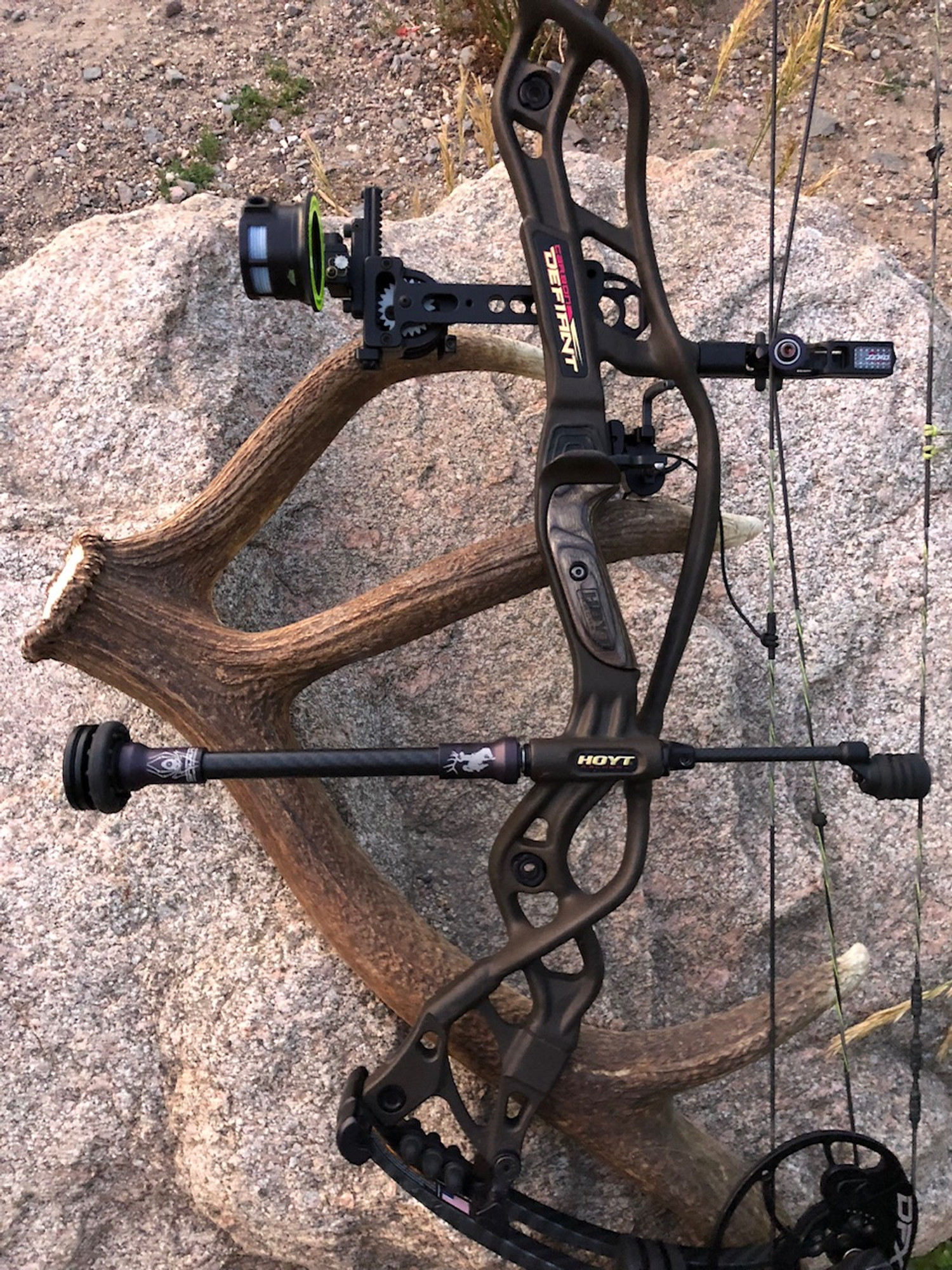The Ultimate Guide to Picking the Right Archery Stabilizer for Improved Accuracy
Among the different devices readily available, an archery stabilizer plays a considerable role in boosting accuracy. In this thorough guide, we will certainly explore the essential elements to consider when selecting an archery stabilizer for enhanced precision. Whether you are a skilled archer looking to upgrade your devices or a beginner looking for support, join us on this trip as we untangle the keys to selecting the excellent archery stabilizer.
Length: Locating the Optimal Stabilizer Length
When selecting an archery stabilizer for optimum efficiency,Establishing the ideal stabilizer length is important. The length of a stabilizer straight influences the balance, security, and precision of the bow. A stabilizer that is also long can make the bow really feel top-heavy and tough to manage, while a stabilizer that is as well brief may not give enough security and dampening of vibrations. Finding the best size requires thinking about variables such as the archer's shooting style, bow weight, and personal choice.
A longer stabilizer, normally varying from 8 to 12 inches, can offer higher security and minimize bow torque. This is especially useful for archers who shoot with a high draw weight or those that have a tendency to torque the bow throughout the shot. The included length helps to distribute the weight evenly and counterbalance any kind of torque or motion.
On the other hand, a much shorter stabilizer, generally between 4 to 7 inches, provides much more maneuverability and quicker action. It is preferred by archers that shoot with a lower draw weight or those who call for more movement, such as hunters or 3D shooters. The shorter size permits less complicated motion with limited rooms and faster changes.
Ultimately, the ideal stabilizer length is a matter of personal choice and shooting design. It is suggested to explore various lengths and observe the impacts on stability and precision. Consulting with experienced archers or experts can likewise offer important understandings and referrals.
Weight: Determining the Appropriate Stabilizer Weight
After considering the optimal stabilizer length, the following vital element to think about when choosing an archery stabilizer is determining the ideal stabilizer weight - archery stabilizer. The weight of the stabilizer plays an essential duty in boosting precision and stability during the shot
The weight of the stabilizer impacts the balance and control of the bow. A heavier stabilizer can supply enhanced security and control, especially for shooters with a propensity for irregular shots or unsteady hands. It assists to take in the vibrations and recoil produced by the bow, reducing torque and reducing the effect on the arrow's trip.
On the other hand, a lighter stabilizer enables for a quicker and more receptive bow. It can be advantageous for shooters that focus on maneuverability and speed over stability. Lighter stabilizers also reduce exhaustion during long shooting sessions or competitors.
To establish the proper stabilizer weight for your requirements, it is important to consider your shooting design, physical stamina, and bow configuration. Try out various weights and observing the effect on your shooting performance is essential to discovering the best balance.
Inevitably, the optimal stabilizer weight will vary for every private archer. It is recommended to begin with a modest weight and make changes based upon personal preference and capturing outcomes. Keep in mind, the goal is to attain a stable and controlled shot, while likewise keeping convenience and convenience of usage.
Products: Picking the Right Products for Durability and Efficiency
When selecting an archery stabilizer, it is crucial to very carefully think about the products made use of in its construction to guarantee toughness and maximize performance. The choice of materials can significantly affect the total quality and performance of the stabilizer.
Among one of the most commonly utilized products for stabilizers is carbon fiber. Carbon fiber supplies a high strength-to-weight proportion, making it light-weight yet incredibly solid. This material decreases and soaks up resonances bow torque, causing improved security and precision. Furthermore, carbon fiber stabilizers are immune to temperature modifications and are much less likely to warp or bend over time.
Another popular product for stabilizers is light weight aluminum. Aluminum stabilizers additionally use a wide array of modification choices, permitting archers to change the weight and length to suit their preferences.
Some stabilizers are created utilizing a mix of products. For example, a stabilizer may have a carbon fiber core wrapped in a light weight aluminum covering. This crossbreed design incorporates the most effective high qualities of both materials, offering optimum security, resilience, and performance.
Style: Understanding the Different Stabilizer Layouts and Their Effects
Taking into consideration the products used in archery stabilizers, it is necessary to currently delve into the different layouts of stabilizers and their corresponding impacts. The design of an archery stabilizer plays a crucial function in boosting accuracy and reducing resonance throughout the shot. There are a number of various styles available in the market, each with its own unique attributes.

An additional popular design is the side bar stabilizer. This style entails connecting a brief rod sideways of the bow, alongside the major lengthy rod. Side bar stabilizers assist in counteracting the weight of devices, such as views or quivers, and offer extra stability to the bow.
Some stabilizers come with adjustable weights. These stabilizers allow archers to fine-tune the balance and feel of their bows by including or removing weights. This attribute is specifically valuable for archers that prefer a details weight distribution or wish to explore different arrangements.
In addition, some stabilizers incorporate moistening innovation to decrease resonance and sound. These stabilizers commonly have integrated dampeners or utilize products that click soak up resonances, causing a smoother his explanation and quieter shot.

Devices: Checking Out Extra Accessories for Boosted Security
To additionally boost security in archery, additional devices can be utilized. These devices are developed to operate in conjunction with the archery stabilizer to provide an also better level of security and precision. One such device is the V-bar or the side stabilizer place. This device enables the attachment of a second stabilizer, which aids to stabilize the bow and lower torque. By distributing the weight equally on both sides of the bow, the V-bar helps to decrease any type of undesirable movement during the shot.
One more accessory that can improve stability is a bow sling. A bow sling is a strap that connects to the bow and permits the archer to maintain a loosened up grasp on the bow deal with without the anxiety of dropping it (archery stabilizer). This unwinded grasp helps to lower muscular tissue tension and permits a more secure and constant shot
Furthermore, a stabilizer weight system can be made use of to make improvements the equilibrium and stability of the bow. These weight systems generally contain little weights that can be included or removed from the stabilizer to adjust the balance factor of the bow. By discovering the optimal balance factor, archers can attain a more exact and steady shot.
Final Thought
In verdict, selecting the right archery stabilizer involves thinking about elements such as size, weight, materials, style, and added accessories. The optimal stabilizer size and weight will certainly depend on individual preferences and shooting design.
Establishing the Discover More Here optimal stabilizer length is critical when picking an archery stabilizer for ideal performance. A stabilizer that is also long can make the bow feel top-heavy and hard to regulate, while a stabilizer that is as well brief might not give adequate stability and dampening of resonances - archery stabilizer.Taking right into account the materials used in archery stabilizers, it is vital to currently dig right into the different layouts of stabilizers and their respective impacts. Side bar stabilizers aid in reversing the weight of devices, such as quivers or views, and give extra security to the bow
These weight systems typically consist of small weights that can be included or removed from the stabilizer to change the equilibrium point of the bow.